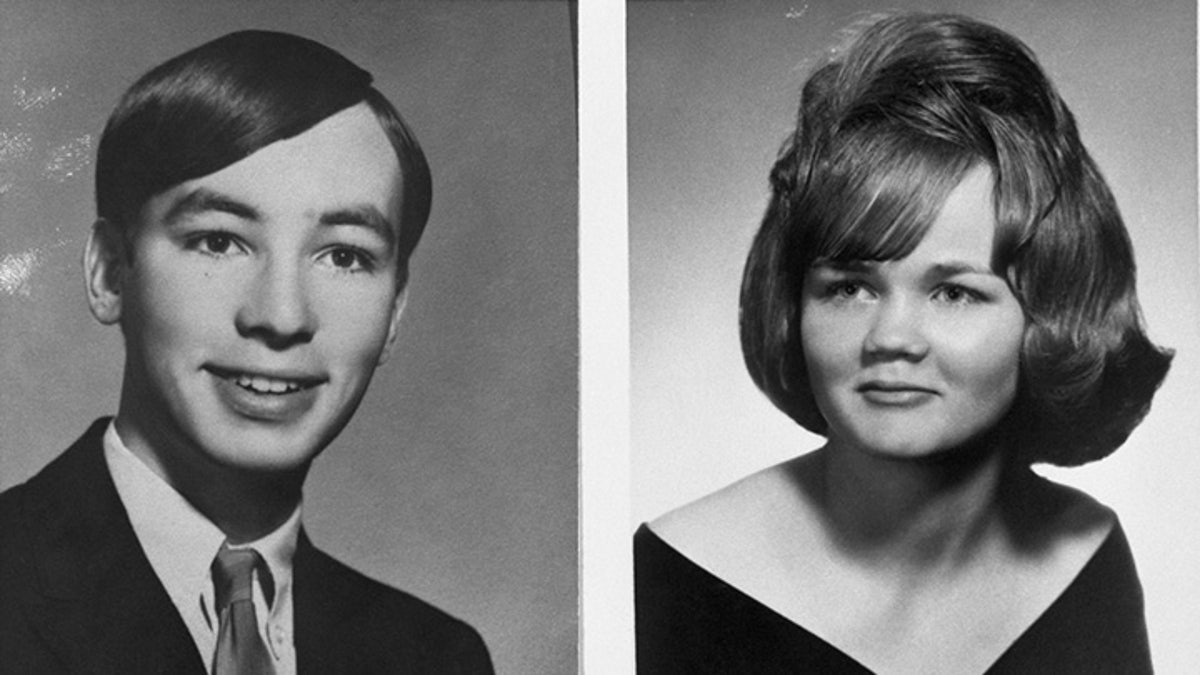
Two major Zodiac suspects, Ross Sullivan (L) and Lawrence Kane, alongside a police sketch of the enigmatic serial killer.
The "Zodiac Killer," a shadowy serial assassin who terrorized Northern California in the 1960s and '70s with a string of grisly slayings and mystifying, unsolvable riddles, may have finally given officials a code they can crack: His DNA.
Throughout his bloody rampage, the killer -- one of history’s most famous unidentified serial murderers -- taunted law enforcement with enigmatic ciphers and bizarre letters in which he claimed as many as 37 victims.
"It’s probably the greatest American unsolved serial killing case. I'm very confident it can be solved."
Now, a half-century later, a detective team has extracted DNA from one murder victim's clothing that may finally help put a name to the infamous, anonymous killer.
"We have the potential to obtain Zodiac’s DNA," cold case detective Ken Mains told Fox News.
In October 1966, Cheri Jo Bates was stabbed after leaving the library at Riverside Community College -- a murder the Zodiac Killer claimed as his handiwork, though authorities never officially linked him to the crime.

Zodiac Killer victims David Faraday and Darlene Ferrin. The killer terrorized California, and the nation, in the late 1960s and early '70s. (Getty)
"During the examination of Bates' clothing, I discovered, without a doubt, two bloody handprints at the bottom of her pants," said Mains, a former FBI task force member and Marine Corps veteran. "We have touch DNA from those handprints."
The revelation came during the recent premiere of HISTORY’s series "The Hunt For The Zodiac Killer," in which Mains, former Los Angeles homicide detective Sal LaBarbera and computer science professor and codebreaker Kevin Knight seek to solve the case. The five-part limited series, which began on Nov. 14, also features a "supercomputer" named CARMEL, which was fed Zodiac's writings so it could learn to "think" like the killer himself.
The team says it may have solved a significant portion of the diabolically complicated Zodiac code, Z340, and has obtained unprecedented access to police files, new witnesses and clues. It also has the cooperation of the CIA and FBI.
Mains said the team has so far focused on two suspects: Ross Sullivan and Lawrence Kane.
Sullivan, who would now be 76, worked in the library where Bates was last seen alive. He was known to wear military-style clothing and combat boots, according to library staff, and footprints that appeared to come from such boots were found at the murder scene. Sullivan also bears a striking resemblance to a police sketch of the Zodiac Killer released at the time.
Sullivan was questioned by police in the murder of Bates, who was never officially declared a Zodiac victim. But Mains noted that Bates' murderer sent a letter to police and newspapers confessing to the crime.
"That letter was very similar to ones the Zodiac sent -- so much so that he misused and misspelled the same letters," Mains said.
As for Kane, he was a Navy veteran who studied cryptography. The Zodiac, Mains noted, sent encrypted communication to area newspapers divulging intimate knowledge of the murders.
Kane, who died in 2010, "has some red flags in his background that jump out to me that make him a viable suspect," he said.
The first Zodiac message was a three-part cipher sent in portions to the Vallejo Times-Herald, the San Francisco Chronicle and The San Francisco Examiner on July 31, 1969. That cipher, cracked by a California schoolteacher and his wife, began with these chilling words: "I like killing people because it is so much fun it is more fun than killing wild game in the forrest because man is the most dangeroue anamal."
That code would be followed by many others that baffled investigators using every resource to solve the riddles. The most infamous was a 340-character cipher mailed to the Chronicle that has never been decoded.
"We’ve got five of the world’s best codebreakers working on these ciphers the Zodiac had taunted police with all these years," Mains said. "They’re using this supercomputer to try to help them decipher it."
Mains also said that four of the known Zodiac killings were "all done on the same day in the lunar calendar cycle."
"Coincidentally, the symbol for that is the Zodiac symbol," he said.
Police confirmed seven murders and two attempted murders were the work of the Zodiac because of information he provided in his letters that was unknown to the public. Among his many victims were David Arthur Faraday and Betty Lou Jensen, teens who were on their first date in December 1968 when they were gunned down in Benicia, California.
But the killer took credit for 37 murders in all.
Mains said he believes his team can uncover the killer's identity with advancements in DNA analysis and other forensic technology that was not available to investigators at the time.
"It’s probably the greatest American unsolved serial killing case," Mains said. "I'm very confident it can be solved."





















